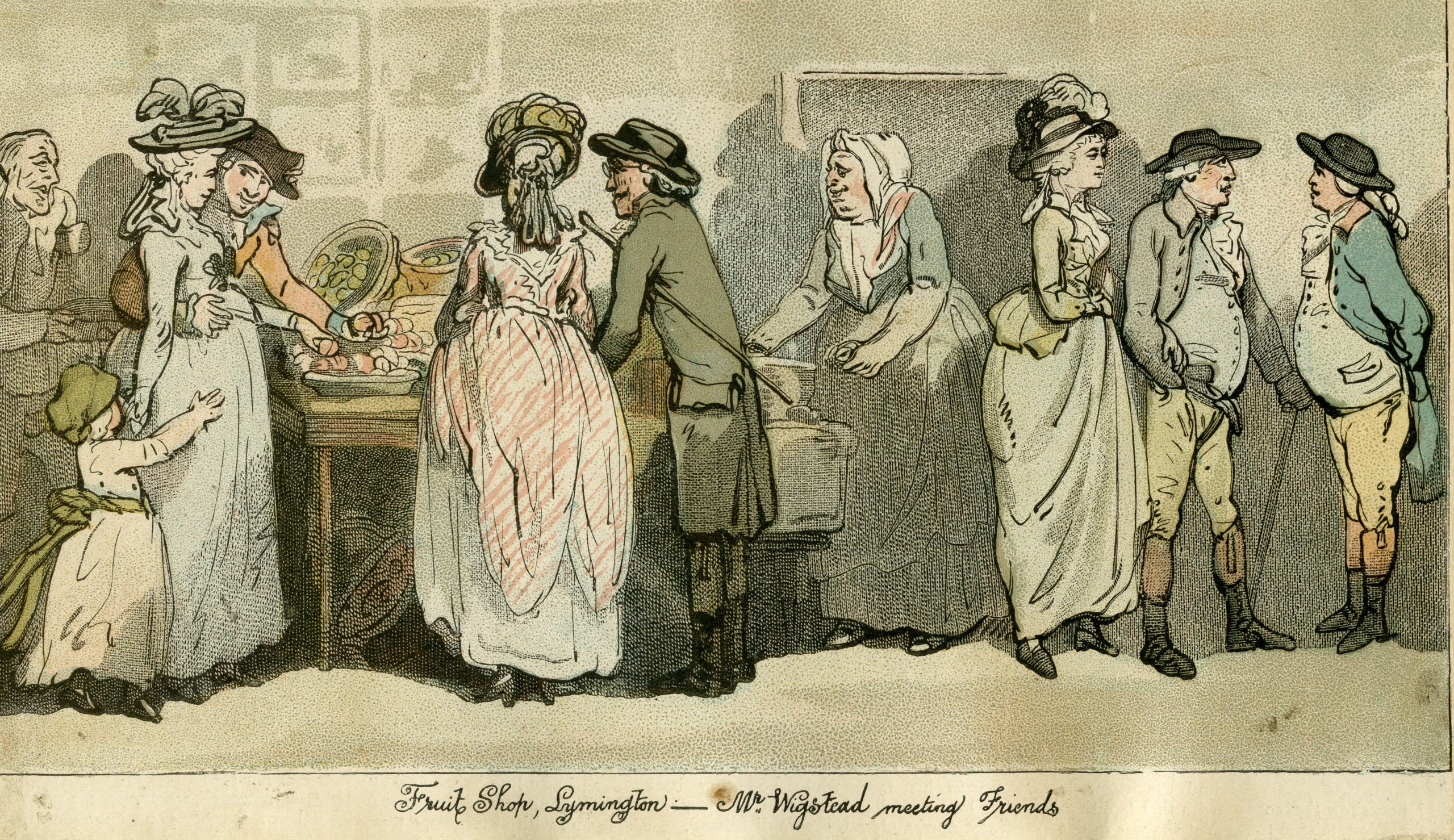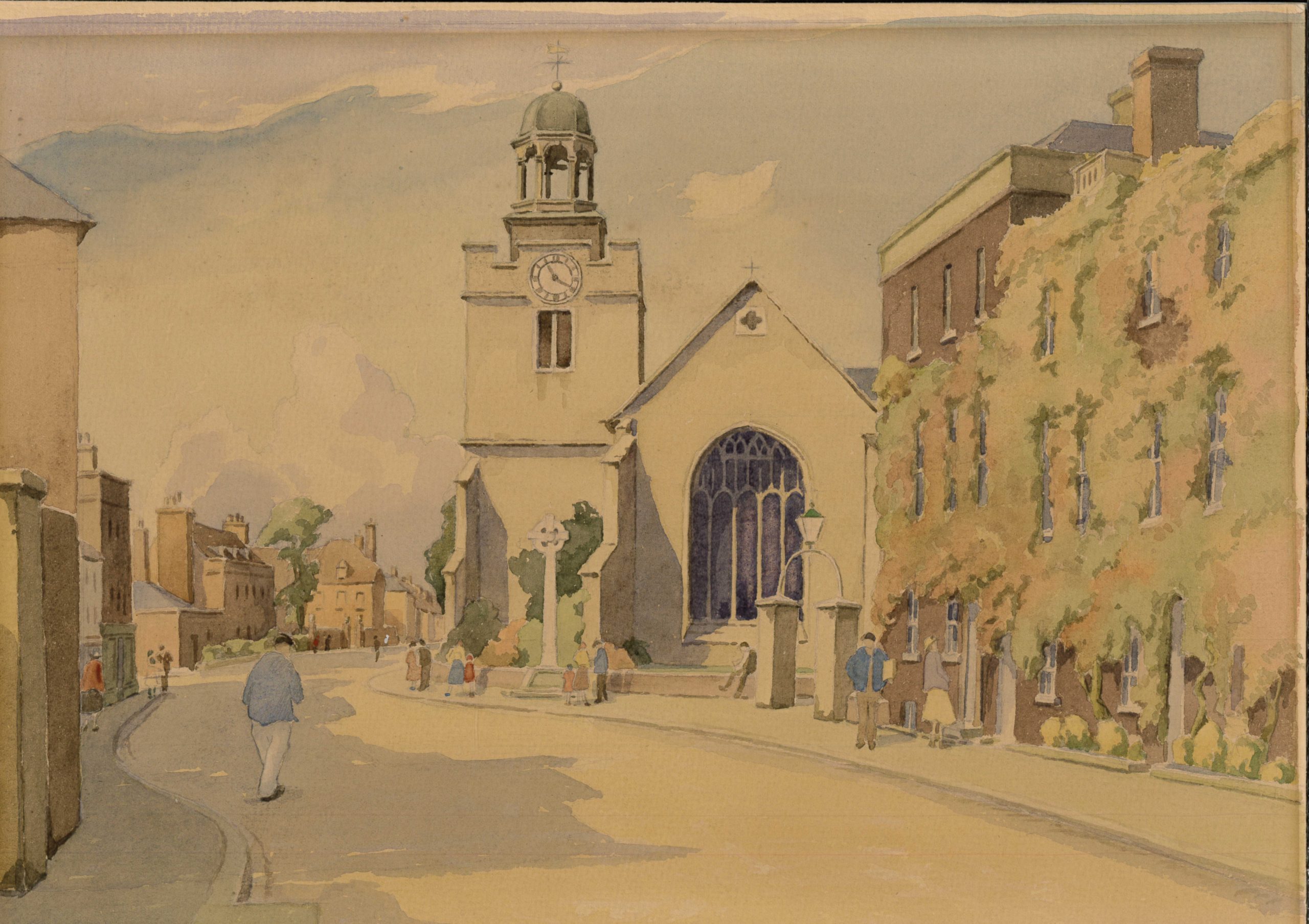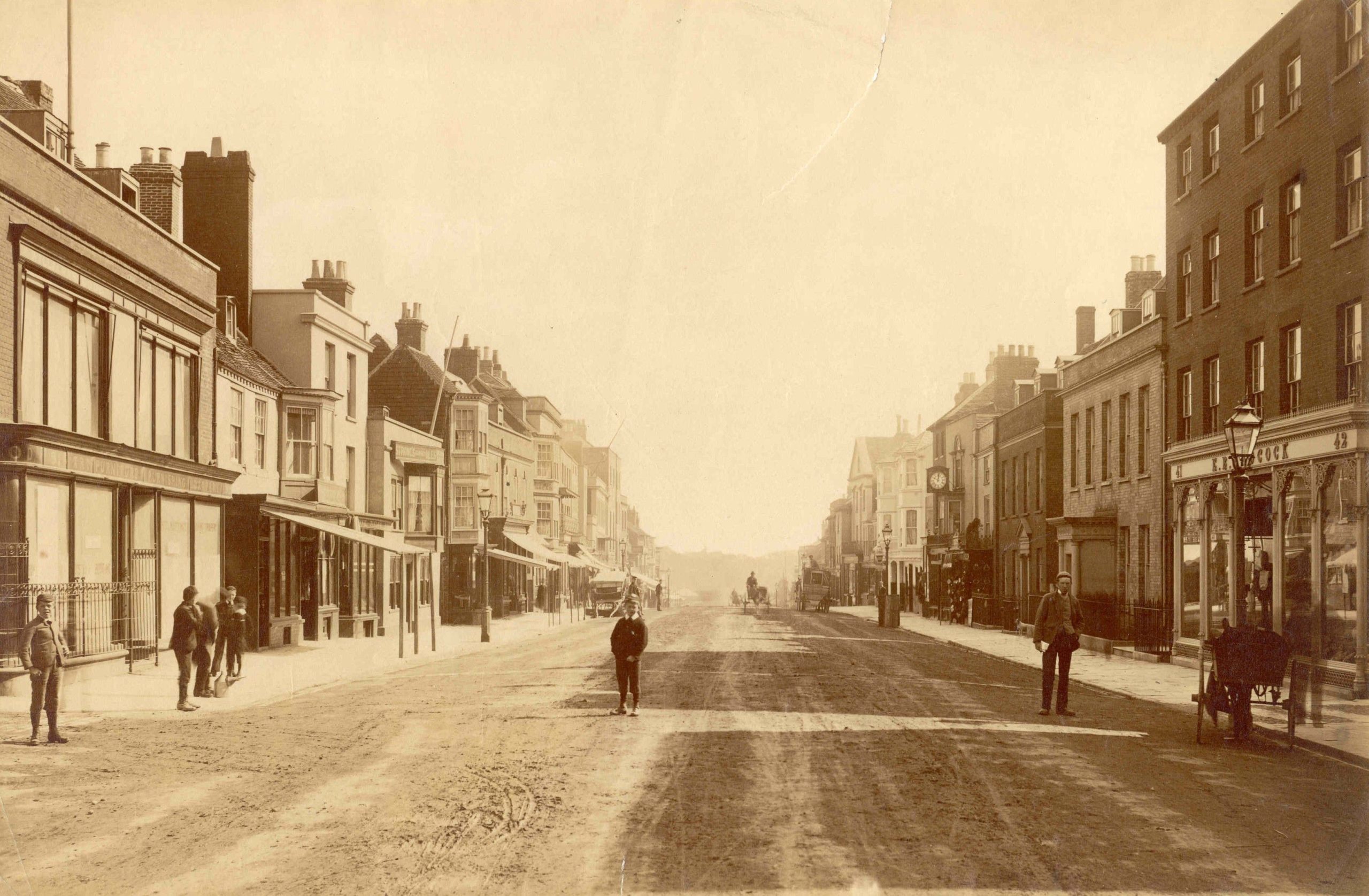The Eighteenth Century

Lymington’s High Street did not change radically for several hundred years until the Georgian period, which saw great changes in its appearance. The town was prospering, particularly because of the local salt industry and many buildings were either re-fronted or rebuilt in brick. This newfound prosperity is reflected by surviving buildings such as Bellevue House (now the offices of Moore Barlow) built around 1760 as an elegant and prestigious private residence. Banker Charles St Barbe lived there from 1828. Another impressive Georgian mansion is Grosvenor House (now home to Millets and Age UK), built around 1831 for James Monro, who served as Lymington’s mayor.
The range of shops and goods available increased greatly during the 18th century and Lymington became an important shopping destination in its own right, serving the south of the New Forest. By the end of the century the High Street was home to various trades including grocers, drapers, mercers, milliners and watch makers.

Once goods had been displayed on tables outside the shops, as seen in Thomas Rowlandson’s drawing of a Lymington fruit shop from the 1780s. These were open to the elements, to dust and mud from passing traffic and to the light-fingered. The development of the shop window provided an indoor space to display goods and a lighter interior for the shop. Bay windows became popular, providing a bigger display area. As glass-making techniques got better and glass became cheaper the individual panes became larger too.




The Nineteenth Century

In the 19th century growing urban populations and better transport links created more customers and demand for High Street shops, which also now had a wider range of goods to sell. No longer just produced locally, these were now transported in by ship and train. The Victorian High Street featured largely independent shops run by local families. Many goods were made on the premises and some shops had workshops attached where items were made.

By this time permanent shops were really coming into their own, offering a week-round supply of goods that the market could not match. The age of the High Street as a shopping street had been born. The road was now gravelled and there were paved walkways and crossing points, saving pedestrians’ shoes and clothing from the worst of the dust or mud. Luxury goods were available from watchmakers, jewellers, glass and china dealers and booksellers. Grocers, butchers, haberdashers, ironmongers and dressmakers provided the essentials while solicitors, banks and insurance companies served the population’s legal and financial needs.

A few businesses of this era survived well into the 20th century including Rand & Son and Elliotts, which is still going strong today. Charles King established his bookselling, bookbinding and printing business in Lymington in 1805 and it was to flourish for almost two centuries. Klitz’s music shop was a feature on the High Street for three centuries, after being founded in 1789. Many others only appear fleetingly in the records, which shows that competition for customers has always been strong on the High Street and less successful businesses did not survive.





The Twentieth Century

The 20th century brought great changes to Lymington High Street. Many local shopkeepers no longer prepared their own goods, instead stocking popular and heavily advertised brands. There was a matching decline in the skills needed to produce such goods locally. Chain stores that might be found on any High Street in Britain also arrived in ever-greater numbers. This was bad news for local family-run businesses who could not compete with the buying and selling power of national businesses that offered lower prices and a wider range of stock.

In the early 20th century when few people had refrigerators there was a need to shop daily for fresh produce, which brought more footfall to the High Street and made it the thriving centre of the town. Before supermarkets this meant visiting a number of shops such as bakers, grocers, butchers and dairies. After the Second World War the rise of supermarkets saw the introduction of self-service shopping. The loss of personal service and social contact with the shop staff was compensated for by greater speed and convenience and lower prices. The success of the supermarket would put many of these individual stores out of business.

The High Street had also been home to a range of tailors, drapers, milliners, bootmakers and haberdashers and for many local people these were the only places to buy clothing save for an expensive and time-consuming visit to the department stores of Bournemouth or Southampton. As rail and road transport became more convenient these large town and city shops began to compete with local suppliers. As such the late 20th century saw the demise of many longstanding family businesses, such as Rand’s, Klitz’s, Bennett’s, Doman’s and King’s, as well as many smaller stores.










